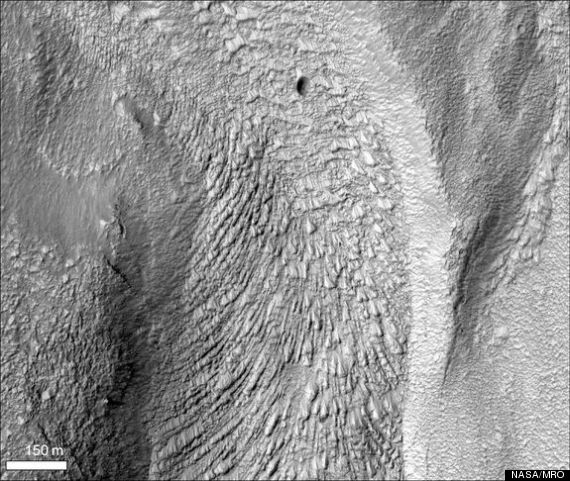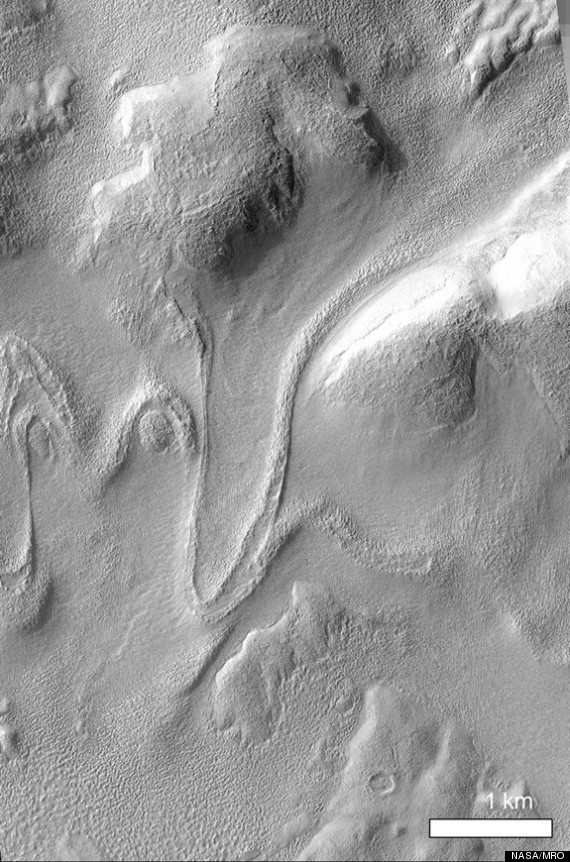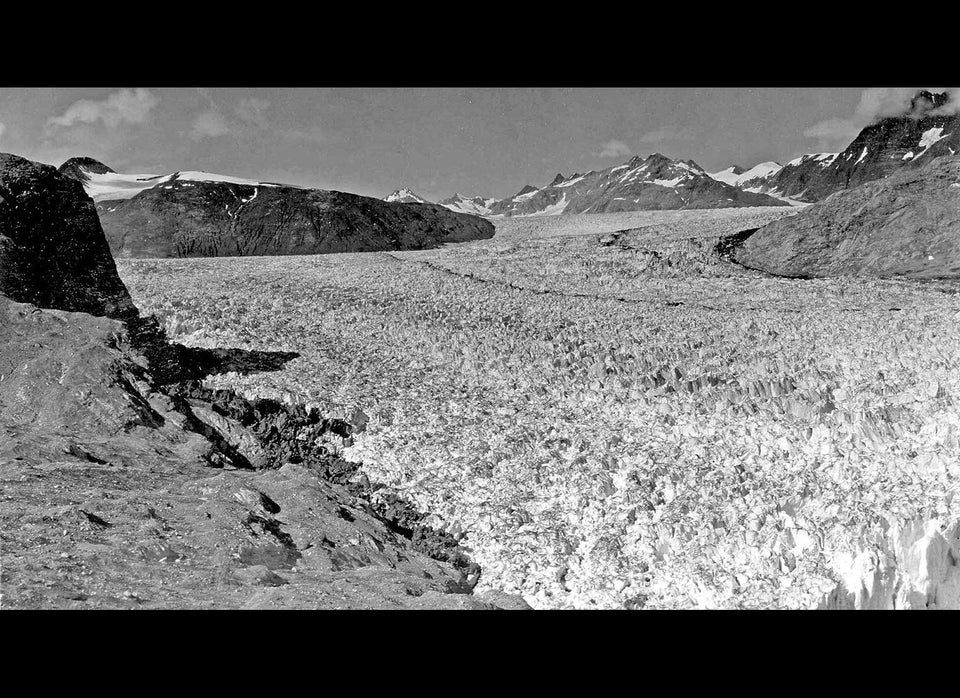
Closeup view shows chevron texture on riverbed floor, indicating how the ice-rich material flowed fastest in the middle and was retarded along the channel walls.
Climate change models used to analyze changing conditions on Earth can be applied to at least one other planet in our solar system — Mars, a new study reveals.
Earth-based computer models can predict the age and location of glacial features on the Red Planet, scientists say. This extra-planetary generalization suggests that climate change models aren't so as inaccurate as they're sometimes portrayed, said study researcher William Hartmann, a senior scientist at the Planetary Science Institute in Tucson.
"Some public figures imply that modeling of global climate is 'junk science,' but if climate models can explain features observed on other planets, then the models must have at least some validity," Hartmann said in a statement.
Hartmann and his colleagues presented the new Mars climate research today (Oct. 16) at the annual meeting of the American Astronomical Society's Division for Planetary Sciences in Reno, Nev.
Today's Martian landscape is not known for its glaciers, but previous research has shown that during some periods of Mars' history, the planet's rotational axis has tilted more than 45 degrees. When this happens, climate models suggest that the polar ice cap tilted toward the sun evaporates, lingering in the atmosphere as water vapor and increasing the chances of snowfall in the hemisphere tilted away from the sun.

Orbital photos from NASA Mars Reconnaissance Orbiter shows lobate-shaped glacier flowing down the north inner wall of crater Greg, on the planet Mars. The wall slopes downhill to the south (bottom) part of the frame.
This last happened on Mars 5 million to 20 million years ago. (Nowadays, it still snows on Mars, but the microscopic snowflakes are made of carbon dioxide, not water.)
Planetary researchers have since used global climate models built for Earth but tweaked for Martian conditions to study Mars' glacial history. They've found indications of glacial features in a 40-mile-wide (64 kilometers) crater called "Greg" in the mid-latitude southern region of the planet. The surface layer of those features would have formed at the same time as the last extreme tilt, PSI scientists found. [Photos of Mars: The Amazing Red Planet]
Now, the researchers have combined four different measurements of Martian geology and climate, including climate predictions, the presence of glaciers, the ages of glacial surface layers and radar measurements of ice. The measurements and models are all consistent with one another, the researchers found.

Sketch map of mid-latitudes on Mars, shows colored spots marking climate model predictions of maximum ice deposition on Mars during periods of extreme axial tilt. Reddest colors indicate peak ice deposits.
"The bottom line is that the global climate models indicate that the last few intense deposits of ice occurred about 5 million to 15 million years ago, virtually centered on Greg crater, and that's just where the spacecraft data reveal glaciers whose surface layers date from that time," Hartmann said. "If global climate models indicate specific concentration of ice-rich features where and when we actually see them on a distant planet, then climate modeling should not be sarcastically dismissed. Our results provide an important, teachable refutation of the attacks on climate science on our home planet."
Follow Stephanie Pappas on Twitter @sipappas or LiveScience @livescience. We're also on Facebook & Google+.
Copyright 2012 SPACE.com, a TechMediaNetwork company. All rights reserved. This material may not be published, broadcast, rewritten or redistributed.
